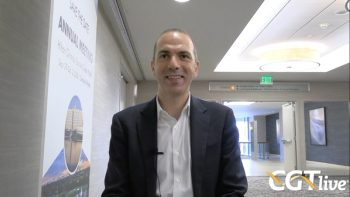
UNC Pediatrics Delivers Gene Therapy to Hunter Syndrome Patient
A 40-year old patient at the UNC Clinical and Translational Research Center was treated with SB-913 this week.
A 40-year old patient at the University of North Carolina’s (UNC) Clinical and Translational Research Center (CTRC) was treated with SB-913 this week.
The investigational genome editing therapy is intended for individuals with mucopolysaccharidosis type II (MPS II), or Hunter syndrome, and the administration of the drug is the first of its kind for Joseph Muenzer, M.D., Ph.D., a pediatric biochemical geneticist who specializes in Hunter syndrome.
The safety, tolerability and preliminary efficacy of SB-913, developed by Sangamo Therapeutics, is currently being evaluated in the Phase 1/2 CHAMPIONS trial. The study is ongoing, and as of this writing, 3 total patients have received the gene therapy.
“I developed a mouse model for Hunter syndrome at UNC about twenty years ago to help develop therapies for this rare disorder,” said Dr. Muenzer. “I spent many years working on gene therapy in my UNC research lab and it is with great pleasure that I am able to finally perform gene therapy on an individual with Hunter syndrome. Gene therapy has the potential to dramatically improve the quality of life for individuals with Hunter syndrome."
In the CHAMPIONS study, three dose levels of SB-913 are being assessed in up to 9 adult males with Hunter syndrome. Using Sangamo’s zinc finger nuclease (ZFN)-mediated in vivo genome editing technology, the gene therapy inserts a corrective gene into an exact location in the DNA of liver cells. The drug’s intention is to enable the liver to produce a lifelong and stable supply of the iduronate-2-sulfatase (IDS) enzyme that is lacking in Hunter syndrome patients. Without the enzyme, individuals with the life-threatening condition suffer from a progressive buildup of glycosaminoglycans, resulting in cell and organ dysfunction.
The ZFNs and the corrective gene are delivered in a single intravenous infusion using adeno-association virus (AAV) vectors that target the liver to control editing of the liver cells. The ZFNs enter the cells as inactive DNA instructions in a format designed exclusively for the liver cells to “unlock.” Once this occurs, the ZFNs detect, bind to and cut the DNA within the albumin gene. Using natural DNA repair processes, liver cells then insert the corrective gene for IDS.
“Dr. Muenzer and his team at UNC Chapel Hill are renowned experts in the treatment of MPS diseases and continue to lead the field into a new frontier of genomic medicine,” said Ed Conner, MD, chief medical officer of Sangamo. “We are very pleased to work with them in this clinical trial evaluating SB-913.”
The current standard of care for patients with Hunter syndrome consists of weekly infusions of an enzyme replacement therapy (ERT), however, within a day of receiving the ERT, IDS quickly returns to near undetectable levels in the blood. SB-913 has been developed as a single treatment strategy.
SB-913 has previously been granted orphan drug, fast track, and rare pediatric disease designations for the treatment of Hunter syndrome from the U.S. Food and Drug Administration (FDA).
For more information on therapeutic breakthroughs throughout the rare disease community, follow Rare Disease Report on
Newsletter
Stay at the forefront of cutting-edge science with CGT—your direct line to expert insights, breakthrough data, and real-time coverage of the latest advancements in cell and gene therapy.










































